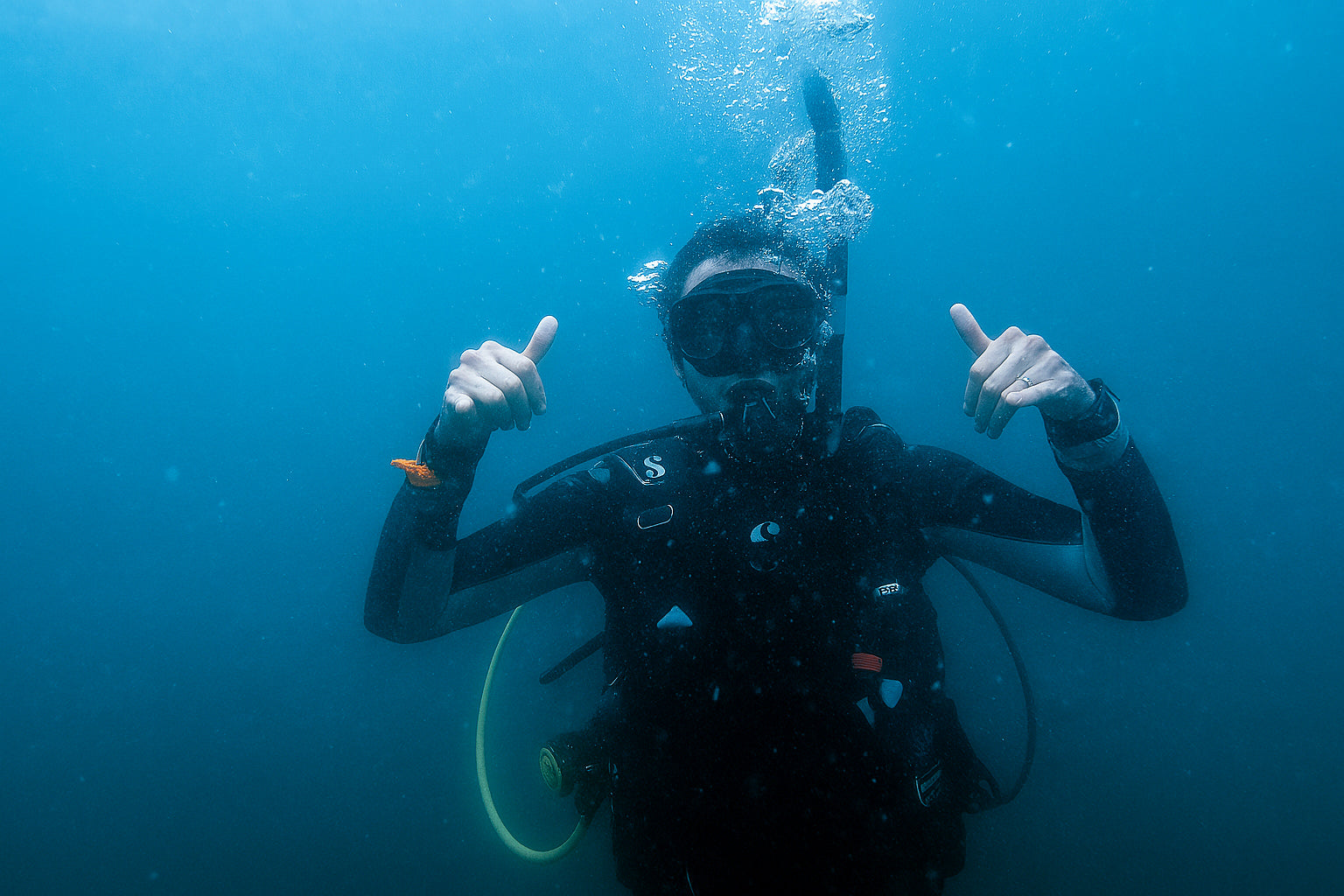
Learning to Dive Part 2: The Training

Before learning how to scuba dive, you’re first introduced to dive culture. Similar to other water activities—fishing, sailing, the like—divers tend to be a pretty easy-going bunch. When the idea of getting certified first popped up, I knew it was important to partner with the right dive authority, instructors, and shop. Not just for the logistics—proximity to home, instruction style, whether the certification dives would be from shore or dock (I was procrastinating the inevitable boat ride as long as I could)—but because we wanted to work with folks who loved diving as much as we love watches. Passion is sometimes hard to explain, but you know it when you see it. Looking back, I think part of what drew me in was seeing a version of the passion we bring to Bernhardt reflected in their world underwater.
Before we go any further—this isn’t a sponsored post. No advertisements. This write-up is just a genuine nod to a great experience, and the folks who made it happen.
I first visited the Scuba Shack’s Charlotte shop on a random Wednesday. Accustomed to dive and snorkel centers in South Florida, I knew what I hoped to find, but imagined something a little more dressed down land locked in the Carolinas—maybe a plain storefront with some gear and a poster of an exotic dive site. Instead, I walked into something that felt like a movie set. Tanks, neoprene, masks, and fins lined the wooden ship-lapped walls. Maps of the world’s oceans hung beside reels showing dive trips the shop had organized around the globe. I was sold. If I needed one last push to take the plunge, that was it.
I met Ken, the owner, and that’s when dive culture really came alive. The most easy-going guy I’ve met. We talked certifications, dive sites, dive computers, watches—all of it. His passion was contagious. I’m fairly certain they’ve never had someone ask as many questions as I did, and for that—I’m sorry. But my recon mission had been successful. Within a few minutes, I was signed up for online training, pool dives, and my final open water certification dives—which, to my delight, would be at a local quarry. No floating vessel needed.
There are a few internationally recognized dive authorities for certification. After some research, we chose Scuba Schools International (SSI). Their app was intuitive, the training material accessible, and the program seemed to match our learning style. You may be more familiar with some of the other guys, and maybe a diver that isn’t ours… But hey, we’re a microbrand, after all. We like keeping things fresh.
The Open Water Diver certification is broken up into three components: online training, pool dives, and open water dives. The online module covers fundamentals of scuba, inherent risks of the sport (and how to avoid them), and fosters a deeper appreciation for the underwater world. The pool dives (at a max depth of 9 feet) introduce you to the gear and your first breaths underwater. And the open water dives—typically four over two days—put everything into practice.
At first, the idea of 10 hours of online coursework felt daunting. College flashbacks hit me fast—long lectures, lingering questions, and the ever-persistent mystery of what exactly f(x) meant in the quadratic function. But SSI opened with a video that knew exactly who it was talking to: “You’re about to embark on one of life’s great journeys.”
Hooked.
Six hours passed like nothing. I finished in one sitting, as if that would somehow speed up the calendar toward my dive sessions. It didn’t—it only made the waiting harder. But it gave me time to start researching gear and slowly shift my identity to my new obsession.
Quick win for the dive watch crowd: even in the SSI training, dive watches get their moment. A short but satisfying acknowledgment of analog timing as a backup to digital. So for those still asking if dive watches serve a purpose—HA!

Next up: gear fitting. I met Jules, one of the shop instructors. She was gearing up for a once-in-a-lifetime trip to Palau, and after a series of Google Image searches, I tried to convince her to bring me with. We tried on mask after mask, suctioning each to my face to find the perfect seal. Then came the snorkel—way more advanced than the ones I rented as a kid at John Pennekamp. No more mouth full o’ ocean when you tilted your head the wrong way.
Fins were next. I was determined to keep things low-key. You know, muted tones—something that said, "I’ve done this before." My first pick? White. Then I learned sharks apparently have a taste for white… So I pivoted—slightly. Teal. The loudest, most eye-catching teal fins you’ve ever seen. I went in looking for stealth and came out looking like a Caribbean traffic cone. But hey, you’ve seen our watches—we like blue. Get over it.
Everything packed into a mesh gear bag, and it was off to the pool. I was equal parts nervous and excited. Any lingering fear had been pushed out weeks earlier during my obsessive pre-swim test training. I’d hit the local YMCA every day to prepare, assuming I needed Olympic-level conditioning. Turns out, I could’ve doggy paddled the whole thing… Read the fine print, people.
In the pool: gear on, air flowing, regulator in. I took my first breath underwater. Cool, dry air hit the back of my throat as I looked around and adjusted to the outer-body experience of breathing where you shouldn’t be able to. I was in.
The next two days were full of new skills: removing your mask underwater and clearing it to see again, achieving neutral buoyancy with a combination of lead weights, lung control, and adjustments to your BCD (buoyancy compensation device—aka the cool-looking vest). Inhaling helps you rise, exhaling helps you sink. It’s not just for safety; it’s respect. When you’re diving, it’s a bit like being on a grade school field trip—you’re a guest. Don’t touch, don’t disturb, and leave no trace. Neutral buoyancy keeps you suspended, just close enough to observe, not disrupt.
The pool was a safe space. But it was time to graduate.

Next up: open water certification at the quarry. No walls, no tiled floor. Just cold water, real depth, and the beginning of what we came here to do.


